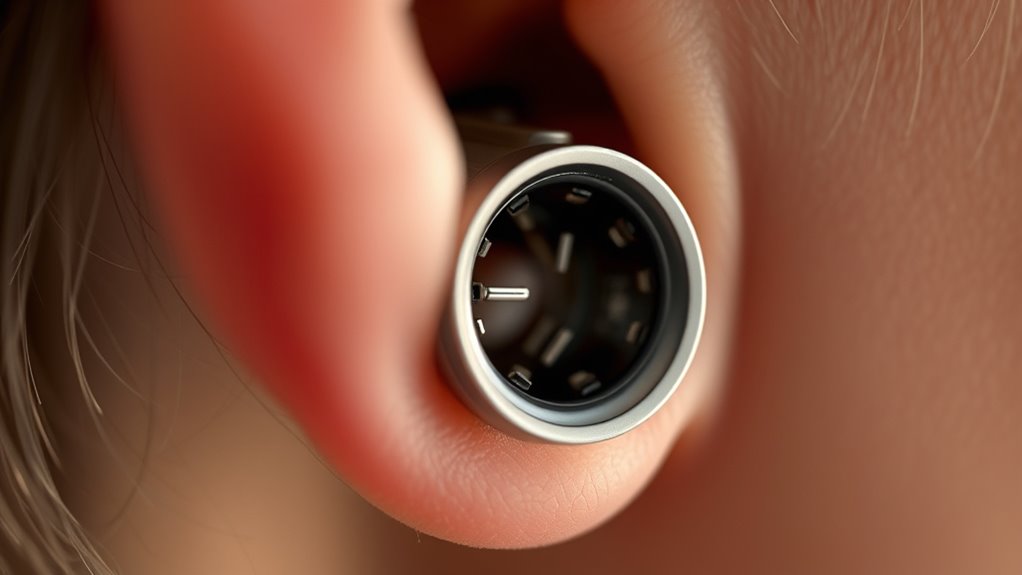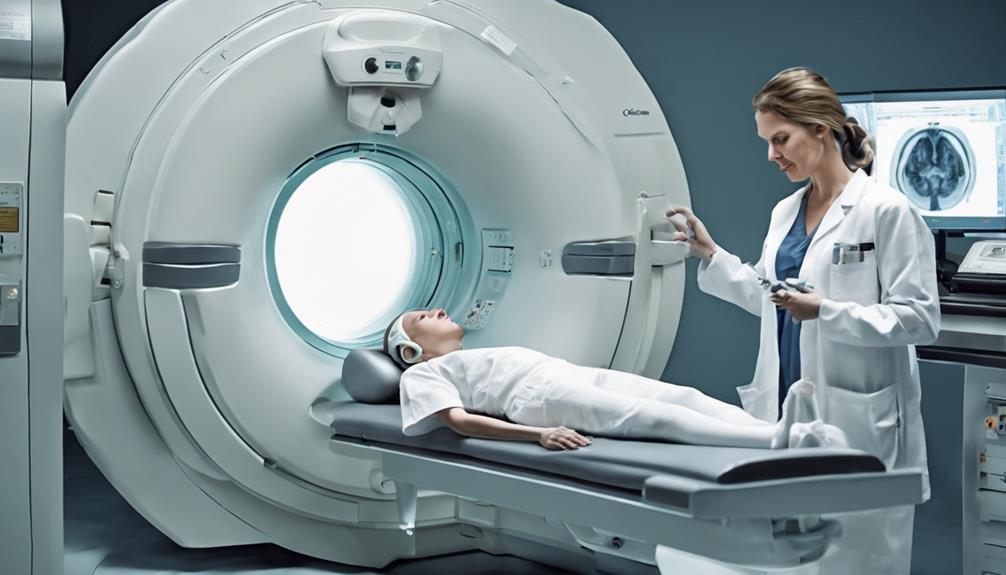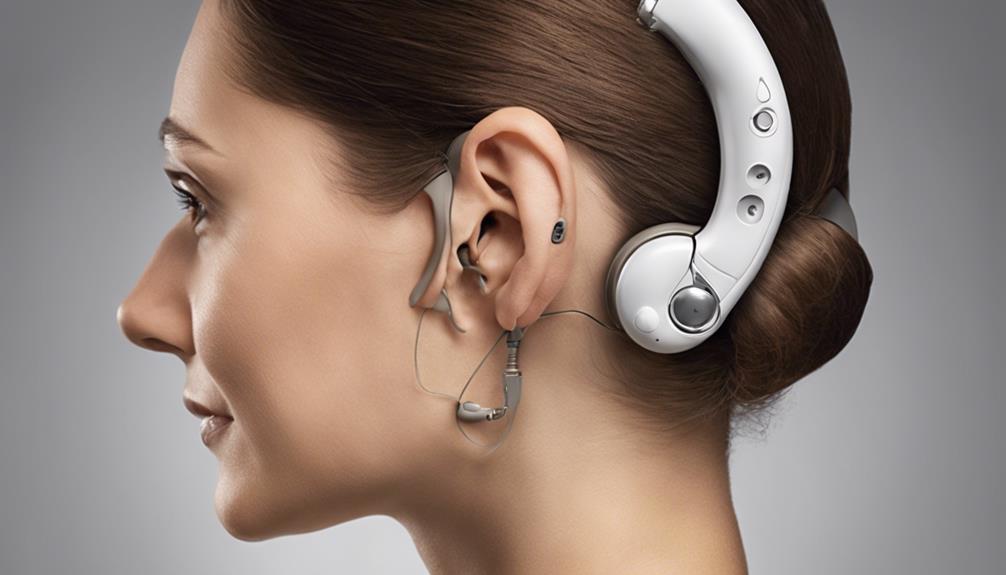The future of fully implantable cochlear devices is exciting and transformative. Expect seamless, discreet hearing solutions with no external parts, thanks to advancements in wireless technology and internal power sources. Wireless recharging and direct streaming will make your experience more comfortable and convenient. As these innovations develop, you’ll enjoy more personalized and autonomous hearing. If you want to discover how these breakthroughs could change your life, keep exploring what’s next.
Key Takeaways
- Fully implantable cochlear devices aim to eliminate external components for seamless, discreet hearing restoration.
- Advances in wireless power transfer will enable indefinite device operation without frequent recharging or replacements.
- Improved wireless connectivity will allow direct streaming, real-time monitoring, and easy device updates.
- Technological innovations will enhance device autonomy, user convenience, and personalized hearing experiences.
- These developments will revolutionize hearing aid technology, making external parts obsolete and improving user quality of life.

The future of fully implantable cochlear devices holds the promise of transforming hearing restoration by eliminating external components. Imagine a device so seamlessly integrated that all parts are contained within your body, making it nearly invisible and more convenient. This innovation hinges on advancements in power sources and wireless connectivity, which are essential for creating a truly autonomous hearing solution. Currently, powering these devices is a significant challenge. Researchers are exploring miniaturized, long-lasting batteries, but these often require periodic replacements or recharging, which can be inconvenient. The goal is to develop a reliable, biocompatible power source that can operate indefinitely without external intervention. Wireless power transfer technologies, like inductive charging, are promising solutions, enabling energy transmission through the skin without invasive procedures. This means you could recharge your device effortlessly, much like wireless charging pads for smartphones, but tailored for medical implants. Advances in energy transfer are crucial for realizing fully autonomous cochlear implants.
Wireless connectivity further enhances the potential of fully implantable cochlear devices. It allows seamless communication between your implant and external devices, such as smartphones or hearing assistive technologies. With robust wireless links, your cochlear implant could receive updates, adjust settings, or connect to streaming services directly, all without needing external controllers. This connectivity also opens doors for real-time health monitoring, where your device can transmit performance data to your healthcare provider. Such features could lead to personalized hearing experiences and quicker adjustments, improving overall satisfaction and effectiveness. Additionally, wireless tech reduces the need for invasive procedures or bulky external parts, making the device more discreet and comfortable to wear. Overall, the integration of sophisticated power solutions and wireless tech is key to realizing the full potential of fully implantable cochlear devices, bringing greater freedom, comfort, and improved hearing to users like you.
Frequently Asked Questions
What Are the Current Limitations of Fully Implantable Cochlear Devices?
You should know that fully implantable cochlear devices currently face limitations like battery longevity, which means you’ll need replacements or recharging sooner than you’d like. Surgical complexity is another concern, as the procedure can be intricate and carries risks. These factors can affect your overall experience, making it important to stay informed about ongoing advancements aimed at overcoming these challenges for better, more reliable hearing solutions.
How Do Fully Implantable Cochlear Devices Compare Cost-Wise to Traditional Models?
You might think fully implantable cochlear devices are costly, but when you compare costs, you’ll see they can be more affordable long-term. The cost comparison often favors traditional models initially, but affordability factors like fewer hospital visits and maintenance make fully implantable devices appealing. While the upfront price may be higher, their durability and convenience can reduce overall expenses, making them a smarter investment for many users.
Are There Any Risks Associated With Long-Term Use of Fully Implantable Cochlear Devices?
You might wonder about risks from long-term use of fully implantable cochlear devices. While they are designed with high device biocompatibility to reduce adverse reactions, you should still be aware of potential surgical risks like infection or device displacement. Regular check-ups help guarantee the device functions properly, and advances in technology continue to minimize long-term risks, making these devices safer for ongoing use.
What Is the Expected Lifespan of a Fully Implantable Cochlear Device?
Your fully implantable cochlear device typically lasts around 10 to 15 years, depending on battery longevity and device durability. Advances in technology aim to extend this lifespan through better battery life and more durable components. You should expect regular check-ups to monitor performance and plan for eventual replacement or upgrades. Proper maintenance can help maximize the device’s lifespan, ensuring you continue to benefit from its use.
Will Fully Implantable Cochlear Devices Be Suitable for All Types of Hearing Loss?
You wonder if fully implantable cochlear devices suit all hearing loss types. While they offer benefits like improved aural rehabilitation and hearing preservation, they may not be ideal for every condition. Factors such as the severity of hearing loss, residual hearing, and ear anatomy influence suitability. Consulting with an audiologist helps determine if these devices fit your specific needs, ensuring you get the most effective hearing solution tailored to your situation.
Conclusion
Imagine waking up every day without worrying about batteries or external parts, just seamless hearing. With advancements in fully implantable cochlear devices, you could experience clearer sound and greater convenience. For example, a user might attend a lively gathering, effortlessly hearing every word without adjusting anything. This future promises not only improved technology but a more natural, unobtrusive hearing experience, giving you back independence and confidence in every moment.











